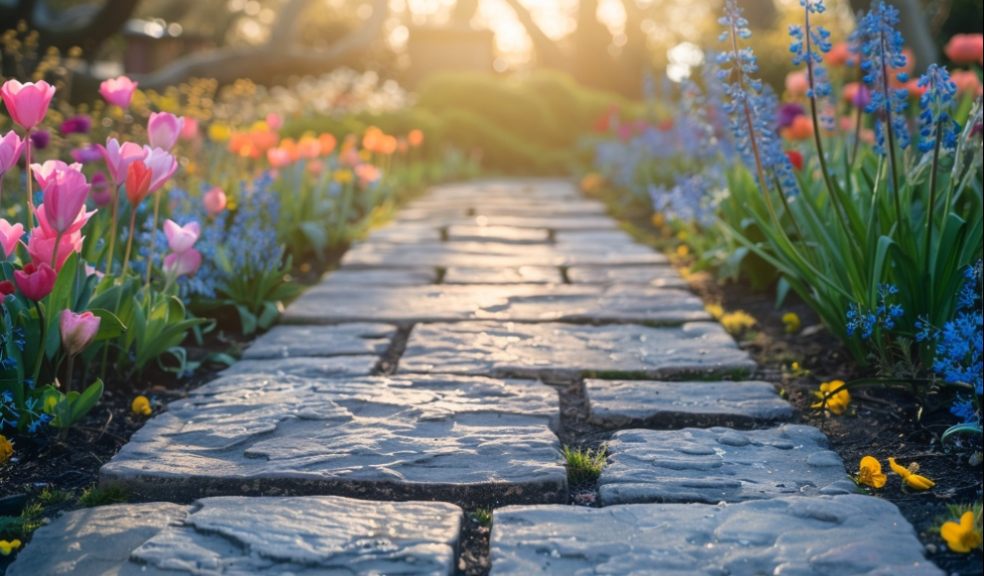
Seasonal Outdoor Paving Care: Tips for Maintenance
We recently had a chance to speak with a landscape supplier Natural Stone and Timber about the importance of seasonal paving maintenance. They have been in the landscaping business for over 20 years, so they know how to keep outdoor paving areas looking good for the whole year.
Most popular paving materials require low maintenance. But low – doesn’t mean that you can do nothing all year round. You still need to put some time in maintaining your outdoor space during each season to save the appearance of your paving slabs. So today, we will share with you some tips that we have learned from NST for each season.
Spring Maintenance for Paving Slabs
Since spring isn’t over yet, we will start with it. This is the perfect time to get your paving areas looking fresh again after the winter months. One of the most important spring tasks is to make a proper cleaning.
"The first step is to sweep or blow away any dirt, leaves, and debris that accumulated over the winter," NST advised. "Then you'll want to give it a deeper cleaning by power washing or scrubbing with a stiff brush and soapy water."
Don't forget to also remove any weeds or moss that may have taken root in joints and cracks. Letting weeds stay can cause further cracking and disruption of the paving over time.
After cleaning, carefully inspect the entire paved area for any cracks, sunken stones, or joints that need re-pointing or repairs. Taking care of winter damage in the spring will prevent further issues down the road.
The final spring maintenance step is to apply a fresh coating of sealant, especially for natural stone paving. Sealants protect against staining, moisture penetration, and fading from UV rays. It's best to reseal every 1-2 years for optimal protection.
Summer Maintenance for Paving Slabs
If you've done all of the spring recommendations, then summer paving maintenance is relatively simple – just focus on keeping things clean and preventing weeds. If no, then apply the same steps from spring.
Since summer is often the season of BBQ and outdoor parties, it is important to promptly clean up any spills or stains from food, drinks, etc. The sooner you can treat a stain, the easier it will be to remove fully. It is ideal to do this immediately after you have stained the tiles. But there is a risk of going crazy. Therefore, you can just safely clean the day after your party.
Weed prevention and control is also key during the summer months when weeds are actively growing. You can apply a paving weed preventer, but be careful with which type you use. "Some weedkillers can actually stain or discolour paving if not formulated for that use. Ensure the weedkiller is specifically developed for use on paving, and always follow the manufacturer's instructions. It's a good idea to test it on an inconspicuous area first."
Other than that, just stay on top of sweeping/blowing away debris, and your paving should maintain that fresh, clean look all summer long.
Autumn Maintenance for Paving Slabs
As the leaves start to change colours and fall, your paved areas require some extra attention. During this period it is necessary not to let fallen leaves linger.
"Leaves can really stain paving materials if you allow them to accumulate and get wet. Make sure to regularly sweep up or blow away any fallen leaves to prevent those stubborn leaf stains from setting in."
Fall is also a prime time for organic growth like moss, algae, and mildew to develop on paved surfaces, especially in shaded areas. If you notice any green or black discolouration, use a specialised cleaner formulated to remove organic buildup without damaging the paving material.
As winter approaches, it is recommended to do some simple prep work as well. Clear out any debris that could clog drainage channels and allow moisture to pool on the paving. If you have outdoor furniture, either store it for the winter or at minimum, use covers to protect it from the winter's cold.
Taking these basic fall maintenance steps will ensure your paved areas are ready for the harsh winter conditions and look fresh again when spring returns.
Winter Maintenance of Paving Slabs
When snow and ice arrive, you'll want to take some precautions to prevent damage to your paved areas.
"Avoid rock salt and other harsh de-icers, as they can cause pitting, discolouration, and spalling of paving materials like concrete, clay pavers, and natural stone. Instead, use pet-friendly de-icers made from calcium magnesium acetate or potassium chloride.”
In addition to de-icing, you'll want to clear the fallen snow from paved surfaces. If you allow snow and moisture to repeatedly freeze and thaw on the paving, then it can lead to surface deterioration over time. Use a plastic shovel or snow pusher to clear pathways and patios after each snowfall.
Finally, once temperatures warm up again, do an inspection of all your paved areas. Look for any cracks, heaving, or other damage that may have been caused by the freezing conditions. Mark and document these areas so you can have them repaired properly once spring arrives.
Maintenance Tips by Paving Material
While the basic seasonal maintenance is similar, there are some specific things to know for properly caring for different paving materials:
Natural Stone (travertine, slate, sandstone, etc.):
- Use pH-neutral cleaners only, as acidic products can etch and damage natural stone
- Always re-seal using a penetrating sealant every 1-2 years to protect from stains
- Avoid de-icers containing ammonium nitrates/nitrites or metal salts
Porcelain/Ceramic Tiles:
- Can use diluted ammonia or mild acidic cleaners to remove stubborn stains
- No need for sealants on porcelain, but sealing grout joints is recommended
- Avoid steel brushes/abrasives that can scratch the tile surface
Concrete Pavers:
- Safe to use de-icers and acidic cleaners on concrete
- Seal pavers every 2-3 years with a breathable acrylic sealer
- Monitor for chipped paver edges and plan to re-sand/stabilise joints
Brick Paving:
- Avoid using acids, as they can dissolve the cement between bricks
- Use a stiff brush and heavy duty alkaline cleaner to remove moss/algae
- Replace damaged bricks and re-sand joints as needed
No matter the material, be sure to test cleaners on inconspicuous areas first.













